The roads around Scotland’s northern coast have always been spectacular – but in 2015 the world suddenly took notice. The new North Coast 500 (NC500) route stretches along some of Scotland’s most northerly coastal points, including Caithness and John o’Groats and was soon feted by holiday-makers and travel writers alike as one of the best road trips in the world.
If you’re looking for an awe-inspiring landscape, spectacular beaches, mountains, castle ruins, then take a trip along the NC500.
Here is our travel guide to Scotland's North Coast 500, including the best places to visit and great places to eat and stay along the route.
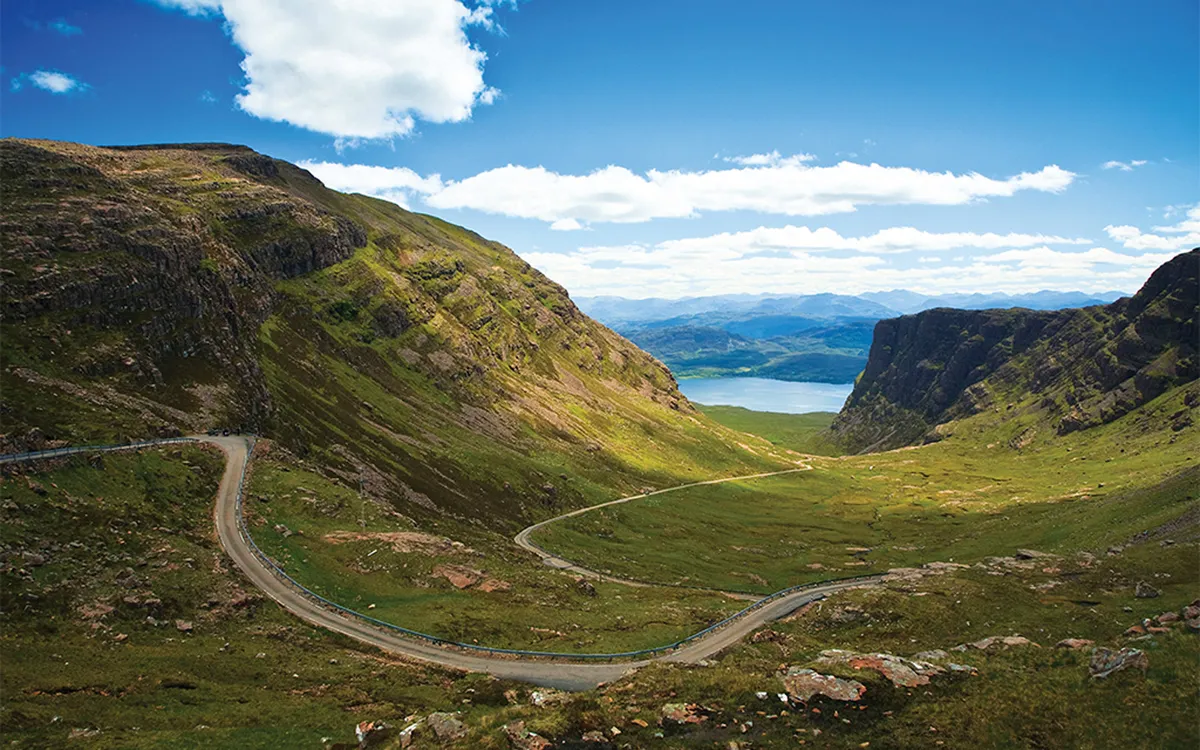
What is the North Coast 500?
The North Coast 500 (NC500) travels through 516 miles of spellbinding scenery: from towering mountains to deep glens, placid lochs, surging waterfalls, heather moorland and white sandy beaches. Sheep and Highland cattle wander quiet single-track roads fringed with sunshine-yellow broom, rowan and silver birch. On grassy verges, red deer graze and, overhead, huge golden eagles glide.
It’s all thanks to the North Highland Initiative (a non-profit organisation established by Prince Charles to promote economic growth in the area), which created the North Coast 500. And if the route’s popularity lasts – as it surely will – it looks set to continue bringing valuable income into remote Highland communities.
So what’s the best way to enjoy the North Coast 500, and what are the unmissable places along the way? This overview reveals just some of the many highlights of the journey – more than enough to whet your appetite for an epic adventure.
The direction of travel around the route is optional, though my preference is clockwise, heading cross-country to the mountainous west coast. Whatever your choice, my advice is to allow plenty of time. Whether driving, cycling or walking, the North Coast 500 is the trip of a lifetime. Rather like a fine single malt, it deserves to be savoured rather than gulped. If you are driving, I would suggest a fortnight; anything under 10 days is just a taster.
More related content:
How long does the North Coast 500 take?
The NC500 is designed to encourage tourism to lesser visited parts of the Highlands. As a result, it is better explored at an easy pace to allow yourself time to fully explore the local areas. Between a seven to 10 days is recommended if touring by car. By bike it really depends on your level of fitness!
More is better to give yourself chance to appreciate the route fully. Your first step is to leave the east coast at Inverness and head inland, where the road rises through wooded hills to meet the Black Water river. At the peaty pools and cascades of Rogie Falls, salmon leap to spawn upstream from July to September. From here the road passes through the deep, rugged valleys of Strath Bran and Glen Carron, in the company of a scenic railway, the Kyle Line. At Loch Carron the route reaches Scotland’s western shores, where it parts with the Skye-bound railway. (A slight detour to Attadale Gardens, on Loch Carron, reveals swathes of Himalayan blue poppies blooming in May and June).
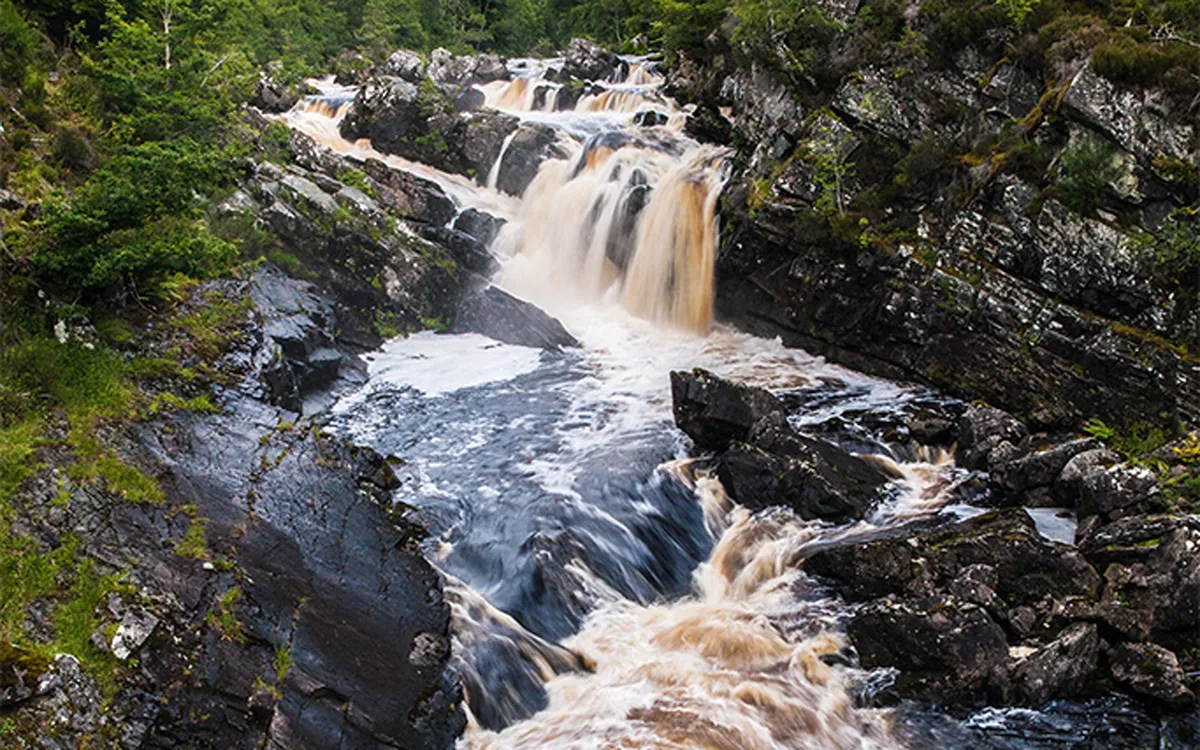
Brace yourself. Ahead lies Britain’s most spectacular (and third highest) mountain pass, the Bealach Na Ba, or Pass of the Cattle. This steep and narrow ascent culminates in a series of hairpin bends but repays you with astonishing views to the Outer Hebrides and Kintail mountains. The pass is the gateway to the remote Applecross Peninsula, where Saint Maelrubha established a monastery in 673AD. The sense of sanctuary continues in the remote coastal village of Applecross, with gentle walks through scattered settlements along the shore. Among the foodie pleasures are home-grown fruit and vegetables in the Applecross Walled Garden café and restaurant and freshly landed seafood at the Applecross Inn.
Where does the North Coast 500 start?
The NC500 starts in Inverness, near Inverness Castle. The castle is a short walk from Inverness bus station and rail station, making it accessible for cyclists or walkers. From there, the journey weaves along the west coast for more than 79 miles to Applecross. Then you'll head northwards towards Torridon and Ullapool where you'll venture to some of the most northerly coastal points in Scotland, passing by Caithness and John o' Groats before heading south again through Dingwall and finally back to Inverness.
Increased tourism along the North Coast 500
Referred to as Scotland’s answer to Route 66, the 516-mile NC500 was created by the North Highland Initiative (NHI). Its aim was to boost tourism in the north Highlands and generate economic opportunities for the area.
The study, carried out by the University of Glasgow Training and Employment Research Unit, estimates the route has attracted 29,000 additional visitors and £9 million additional spend in its first year.
The research drew upon various data, including figures from tourism information centres along the NC500 which showed an average 26% increase in visitor numbers since the route opened.
This compares with a 6% average increase across Highland.
Traffic data also reveals that volumes along the route were up by some 10%.
Other factors would have contributed to this growth, including the fact that it was a generally strong year for tourism in Scotland and the Highlands.
However, the findings from the study, coupled with the results from a previous survey of businesses on the route by NHI, indicate that the NC500 has been a major driver of recent increases.
The report also highlighted challenges to ensure long term success of the NC500. These include maintaining the condition of the route, ensuring sufficient parking, waste facilities and public toilets, and continued efforts to encourage better driving.
How to travel on the NC500 responsibly:
- Follow the rules of the road
- Take your litter home with you or dispose of it properly
- Support local businesses by spending money in local cafes, restaurants and hotels etc.
Best things to see and do along the North Coast 500
Best landmarks to visit along the North Coast 500
Driving from Shieldaig, the massed ranks of the Torridon mountains are breathtaking.
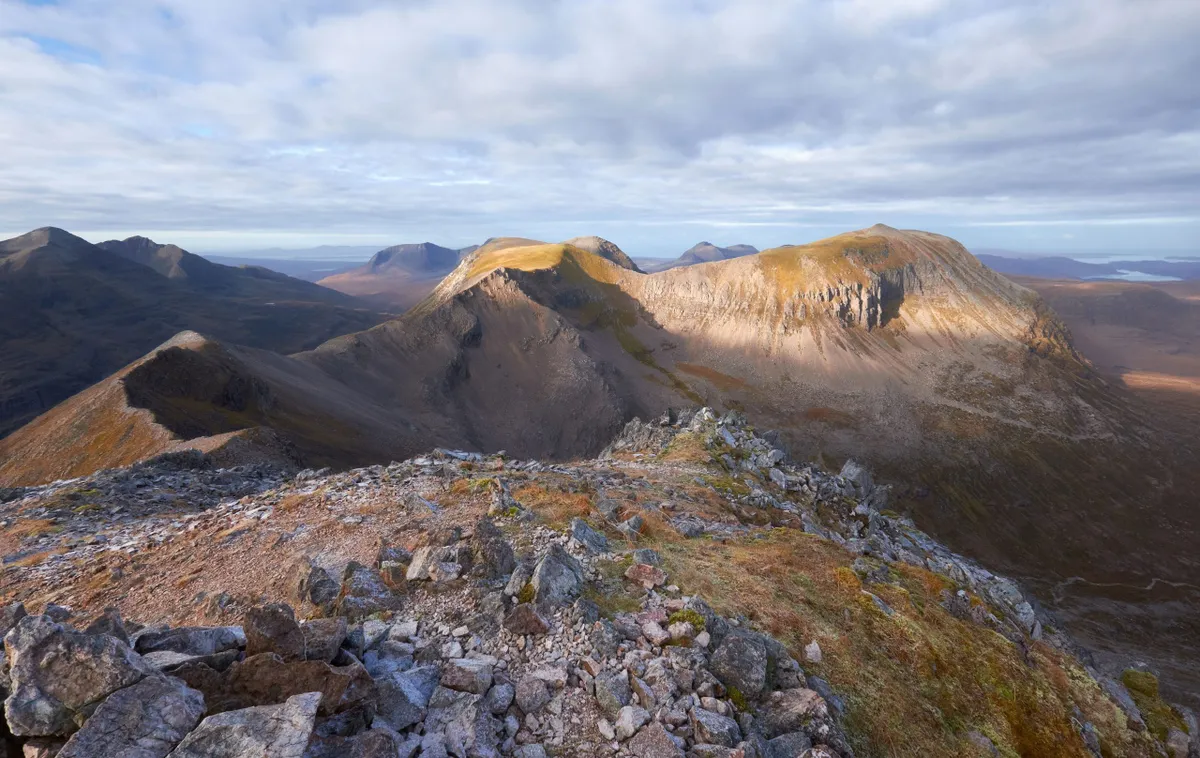
Assynt's peaks are ancient shapeshifters, offering new forms at every twist of the road.
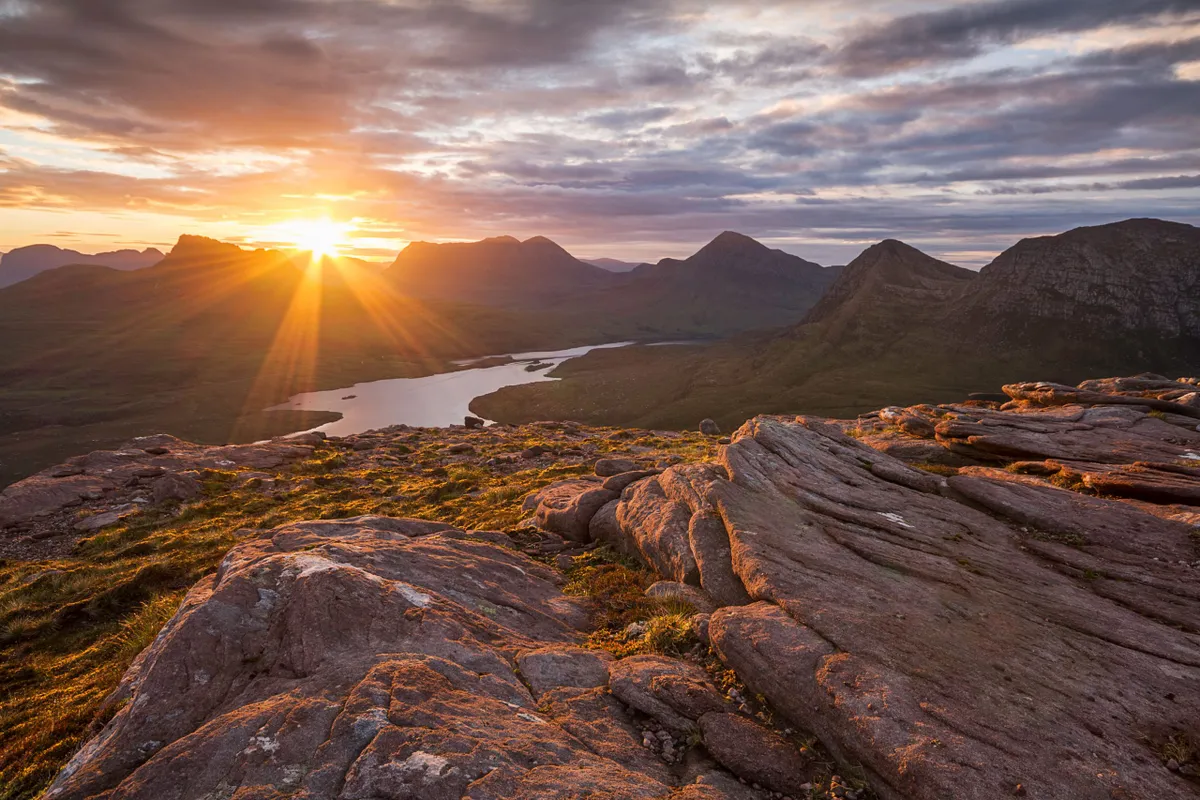
Spectacular sand beaches at Redpoint are backed by the Isle of Skye across the sea.
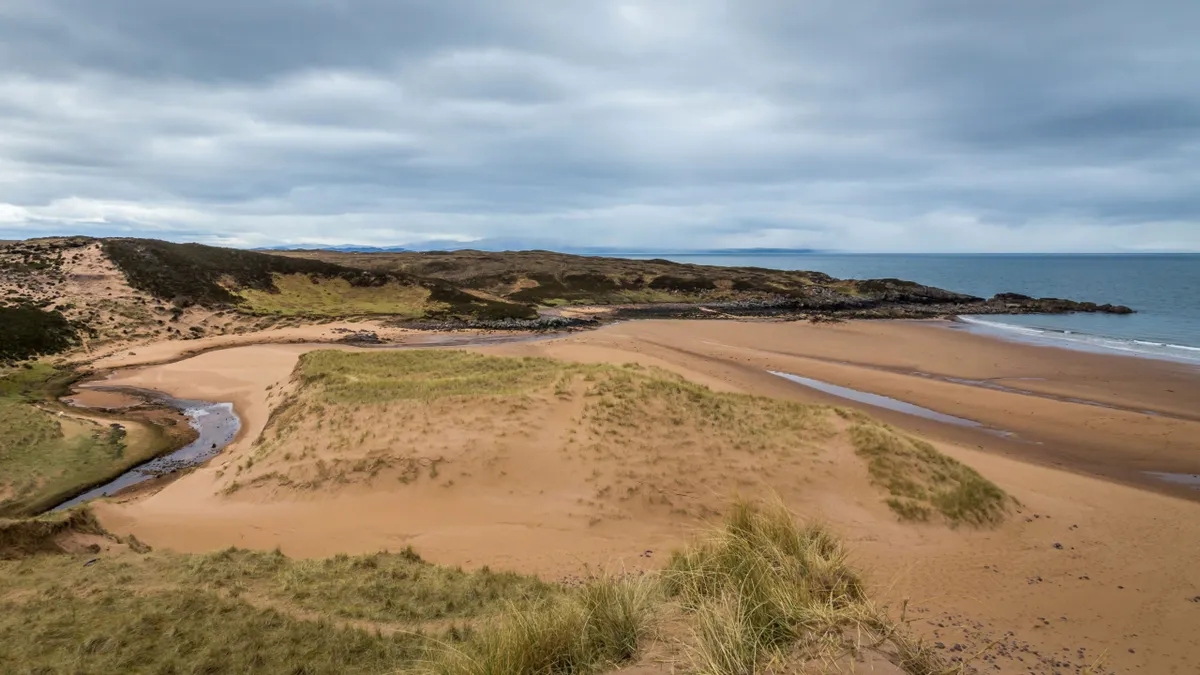
Sinclair’s Bay golden beach is also stunning.
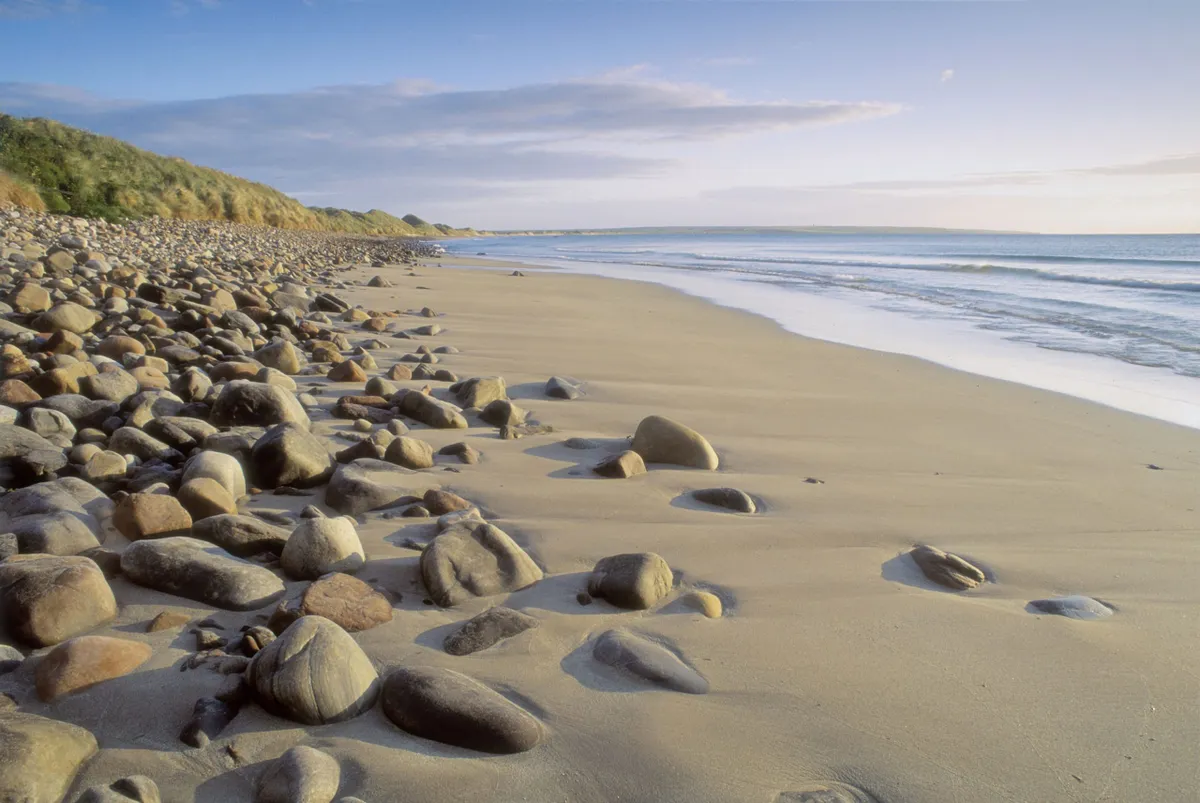
Magnificent sea stacks at Duncansby Head rise from the sea like fierce shark teeth.
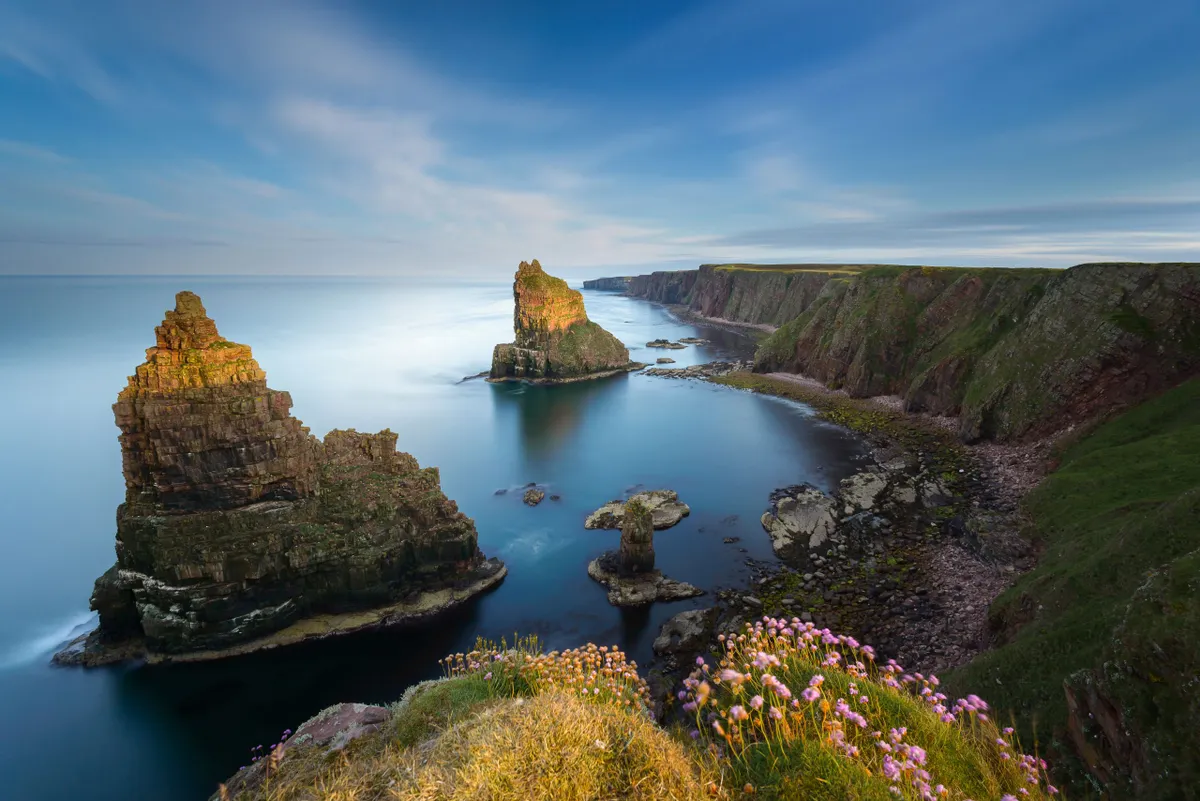
Britain’s best coastal caves, arches and stacks
Along the British coastline you will find a range of dramatic rock formations which range from hidden caves, arches and stacks.
Our guide to the most spectacular coastal caves, arches and stacks along the British coast.
At low tide, the Kyle of Tongue’s sandbanks and salty pools are serenely beautiful, with Ben Loyal as backdrop. Dunrobin Castle Golspie Modelled on a Loire chateau, Dunrobin Castle is a treasure trove with beautifully manicured gardens.
The Kyle of Tungue is a sheltered inlet off the treacherous Pentland Firth, on the north coast of Scotland/Credit: Getty Images
Bag a Munro
No trip to the Highlands would be complete without climbing a Munro or two. The towering peaks of Suilven and An Teallach can be reached from the NC500 and offers breathtaking views of the northern Highlands if you fancy a scramble.
Alternatively, hike Scotland’s most northerly Munro, Ben Hope – an isolated mountain, accessible from the village of Tongue on the north coast of Sutherland. Test your legs with a short but steep climb to the top, where you’ll be rewarded with a view of the wild northern landscape.
Scotland’s best walks
Explore the Highlands, Scottish Isles, Borders and more with our guide on the best walks in Scotland. Whether you're looking for long-distance Highland hikes, coastal treks or short river walks and loch-side strolls we have walking routes for all abilities.
Best mountain scenery to see along the NC500
Following the rocky coast of the Applecross Peninsula, the North Coast 500 passes Cuaig, where crofters at Croft Wools spin wool from sheep that graze heather-covered hills and munch seaweed on the shore. Behind the whitewashed cottages of the pretty fishing village of Shieldaig, the mountains of Torridon loom.
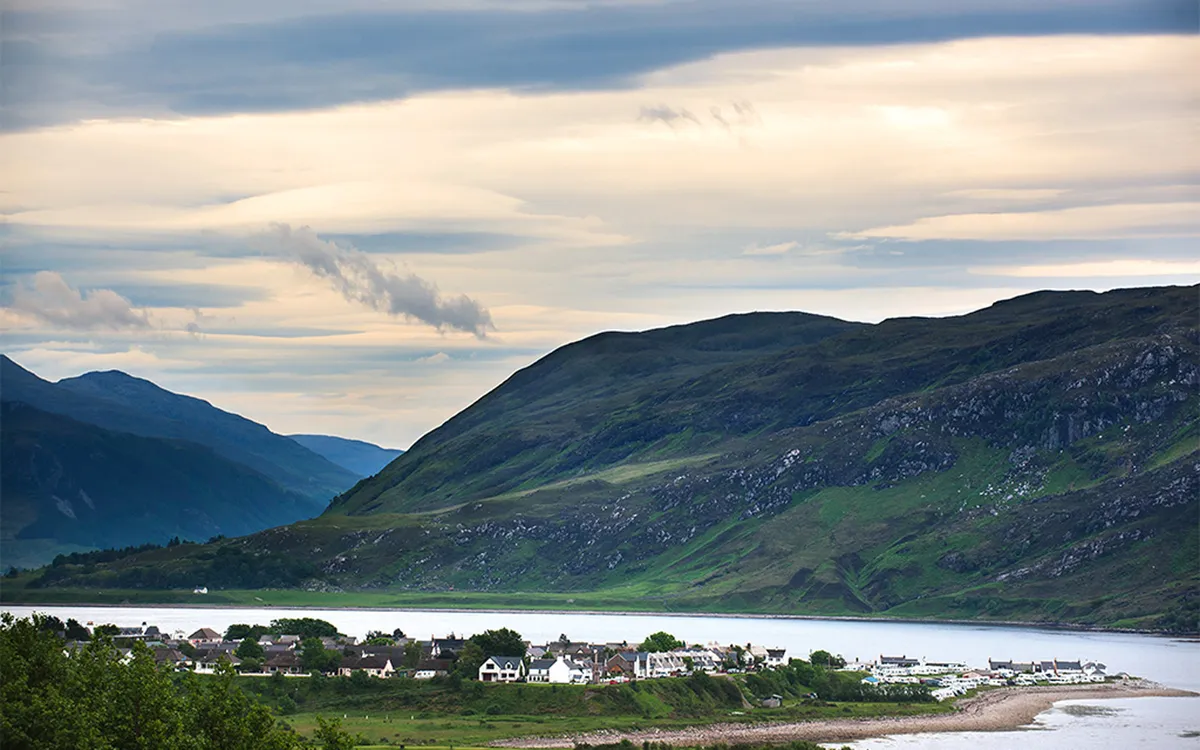
The route through Glen Torridon reveals the spectacular mountain scenery of Beinn Eighe, Britain’s first national nature reserve. When the road winds back to the coast at Loch Gairloch, there’s a delightful detour to the amber sands of Redpoint Beach, with views to the isles of Skye and Rona. From Charlestown, a coastal crofting township, you can join a boat trip to see harbour porpoises, seals, whales, and dolphins.
In this rugged landscape, Inverewe Garden, planted on the sheltered shores of Loch Ewe in the 1860s, come as a gloriously lush delight. Voted Garden of the Year in BBC Countryfile Magazine Awards 2017, Inverewe enjoys a microclimate tempered by the warm waters of the North Atlantic Drift, in which exotic species thrive.
The coast road now skirts a rugged landscape known as the Great Wilderness, which rises to the jagged peaks of An Teallach, before arriving at Corrieshalloch Gorge, a mile-long box canyon where the River Droma falls spectacularly after heavy rain. From this drama, it is just 10 miles to the civilised Highland hub of Ullapool.
Best beaches to visit along the NC500
In 1788, the British Fisheries Society commissioned the great engineer Thomas Telford to design a new fishing village to create much-needed jobs. Ullapool was the result. The shoreline settlement is perfect for pottering about. You can hire a kayak, or take a cruise trip to the nearby Summer Isles, which are as beautiful as they sound.
From Ullapool, the North Coast 500 climbs towards Assynt and some of the oldest rocks in the world in the Northwest Highlands Geopark. Detours to the mini-mountain of Stac Pollaidh and the immense beach at Achnahaird are well worth it.
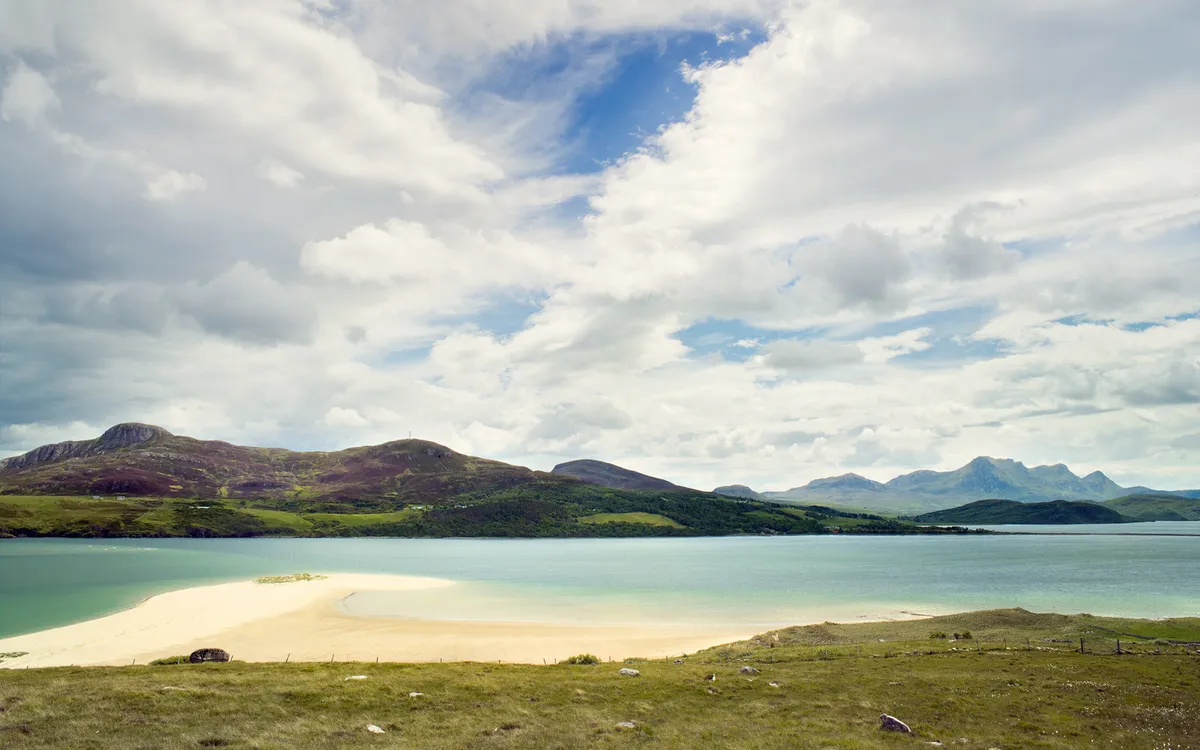
The route sweeps by Loch Assynt towards the harbour village of Lochinver, dominated by the sugarloaf mountain Suilven, a huge sandstone mass rising from the surrounding moorland. Lochinver proved a highlight of the trip. I strolled through pine-scented woods to discover the secret White Shore beach, where I picnicked, swam and quietly observed red deer hinds and fawns grazing on the shore under a sunset sky of raspberry and marmalade. In the evening – over a crackling log fire, while I sipped a wee dram –a meteor shower cascaded like fireworks through clear skies over the dark mountain ridges all around.
Onward to dreamy beaches (Clachtoll, Achmelvich, Clashnessie) and handsome Kylesku Bridge. A lengthy detour reveals haunted Sandwood Bay, a spectacular strand a mere four miles from the car park.
In the cliff-top village of Durness, the North Coast 500 skirts the far northwest corner of Great Britain. A trio of massive beaches dominates: Balnakeil, Sango Sands and Ceannabeinne. Vikings once sheltered in the immense chamber of Smoo Cave. From the Kyle of Durness, a boat trip and minibus ride take you to remote Cape Wrath lighthouse and spectacular views of Clo Mor, the highest sheer cliffs of the British mainland (281m above the crashing surf).
Best waterfalls to visit along the along the NC500
Take a stroll along the wooded Fairy Glen in the Black Isle to discover two beautiful waterfalls. Keep an eye out and if you’re lucky you might spot grey wagtails, dippers and buzzards.
Near Lairg, visit the Falls of Shin – a spectacular waterfall with plenty of forest walking and cycling paths suitable for children. What makes this waterfall so special though, is that it is one of the best spots in Scotland to see leaping Atlantic salmon. Visit in the late summer months to see this spectacular event.
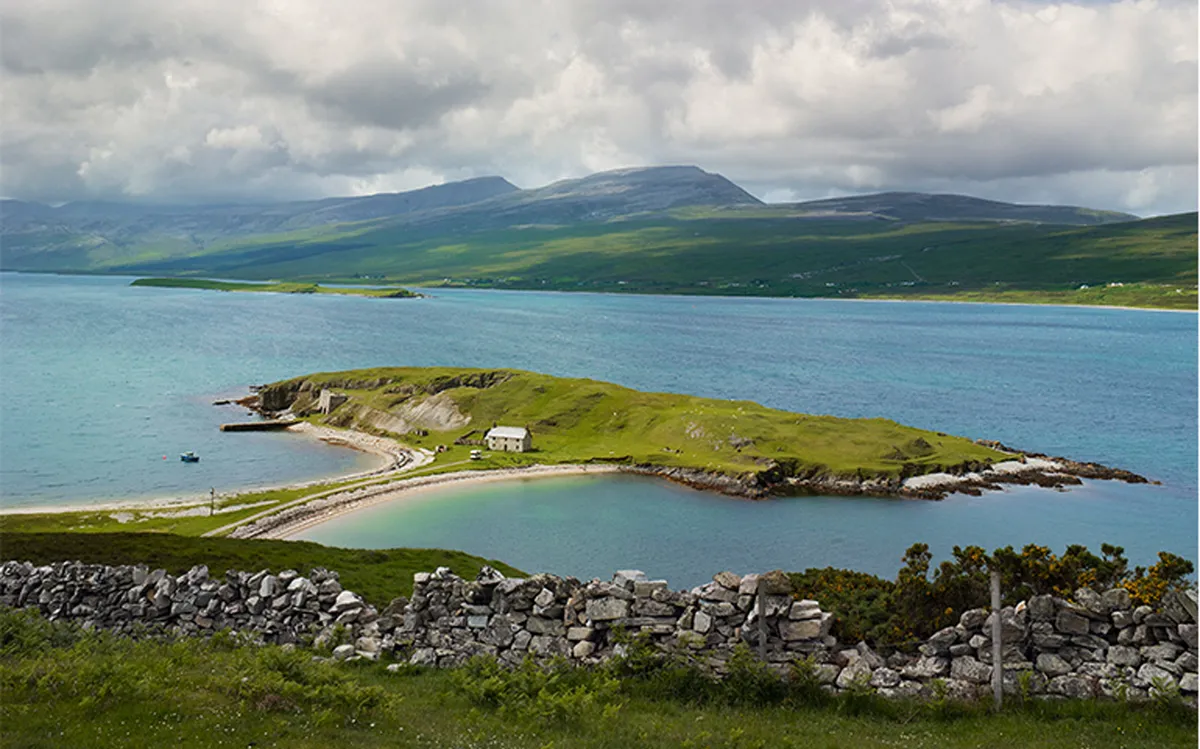
The road turns east and winds along the shores of Loch Eriboll through mountains at the edge of the Flow Country, Europe’s largest expanse of blanket bog. At the Kyle of Tongue, a bridge and curving causeway crosses the sea loch, providing magnificent views inland to Ben Loyal – the Queen of Scottish mountains – and out towards the Rabbit Islands, with yet another beautiful beach at Coldbackie.
Soon we are deep into Caithness, where upright flagstones serve as field boundaries, and intriguing Iron Age broch towers – a type of roundhouse – proliferate.
Coastal wonders
The surging Pentland Firth, one of the most hazardous waters in the world, shapes Thurso. Surfers are drawn to the huge waves that break in the bay. From Scrabster, the regular Orkney Island ferry service sails past the Old Man of Hoy sea stack.
A series of short detours from Thurso lead to atmospheric headlands teeming with seabirds: Dunnet Head, St John’s Point, Duncansby Head. Cliffs and sea stacks are spectacular in fine weather but in cold mist and high winds this exposed far northern edge of Britain is forbidding.
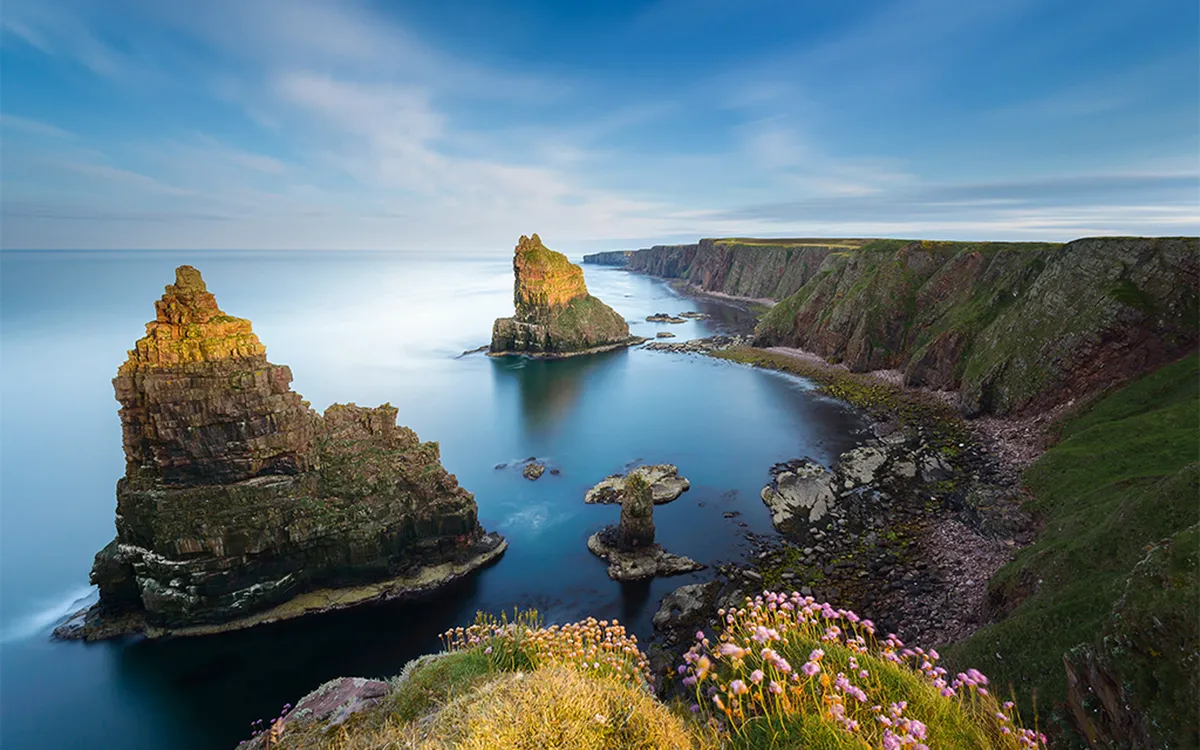
The famous fingerpost at John O’Groats provides photo opportunities – although the true furthest point north of the British mainland is actually at Dunnet Head.
Sinclair’s Bay’s stupendous 5km swathe of golden sand and dunes announces your imminent arrival in wonderful Wick. When the harbours of Staxigoe and Papigoe became too small for 18th-century herring fleets, the port of Wick stepped into the breach. Telford upscaled the harbour, built a bridge and designed accommodation for workers in Pulteneytown. Wick became the world’s largest herring fishing port; the story is told in a characterful heritage centre.
Along the east coast, the North Coast 500 travels to curiosities including the Whaligoe Steps, a 330-step staircase cut into the cliff face to serve a tiny harbour far below, and the huge Neolithic tombs of the Grey Cairns of Camster.
Another Telford bridge spans one of the world’s most prolific Atlantic salmon rivers at Helmsdale. Opposite the lovely Timespan Heritage Museum is a vaulted icehouse, which served the fishing industry.
A giant hilltop statue of the First Duke of Sutherland dominates Golspie, gazing upon the village and his imposing ancestral home at Dunrobin Castle. The Duke’s eviction of thousands of crofters from his estate during the Highland Clearances causes many to detest the monument.
Passing the cruise liner port of Invergordon, the NC500 crosses to the Black Isle. Though not actually an island, much of the pastoral landscape is surrounded by the waters of the Beauly, Cromarty and Moray firths. Among the Black Isle highlights is the opportunity to observe resident Moray Firth dolphins from the shore at Chanonry Point, a happy way to conclude the North Coast 500 experience before returning, at last, to Inverness.
Where to stay along the NC500
Here is a selection of the best places to stay along the North Coast 500 route.
Ackergill Tower, Near Wick
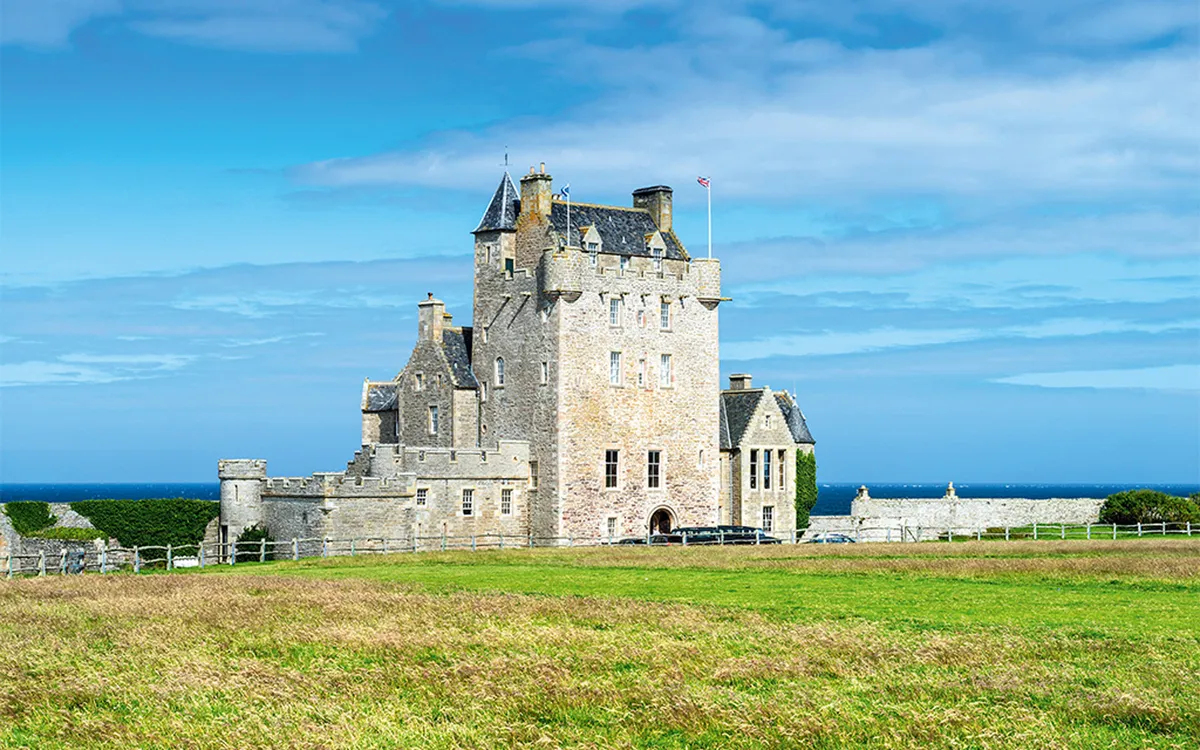
A dreamy, romantic 15th-century castle with a sheltered walled garden set on the shore of Sinclair’s Bay, a vast sandy beach. ackergilltower.com
The Kylesku Hotel, Kylesku
A stylish former coaching inn dating back to 1680, located on the shores of Loch Glendhu. kyleskuhotel.co.uk
Sleeperzzz, Rogart
Budget accommodation on a former first-class train set beside a working railway station. Open March to September (the B&B studio flat is open all year) sleeperzzz.com
Camper Vans
Camper vans are welcome in the Highlands, though many sections of the route are unsuitable for large vehicles. Visitors wishing to savour the scenery slowly are politely asked to use passing places on single track to permit overtaking rather than holding up local traffic going about daily business.
Wild camping is possible but please respect local communities and be fully aware of the Outdoor Access Code.
Read our beginner's guide to wild camping
Best places to drink
Pulteney, Wick
Among several distilleries along the NC500 is Old Pulteney in Wick, producing a single malt with a salty tang. oldpulteney.com
Dunnet Bay Distillers, Dunnet
Try a new gin infused with Highland herbs at this coastal distillery. dunnetbaydistillers.co.uk
Best places to eat
Kishorn Seafood Bar, Kishorn
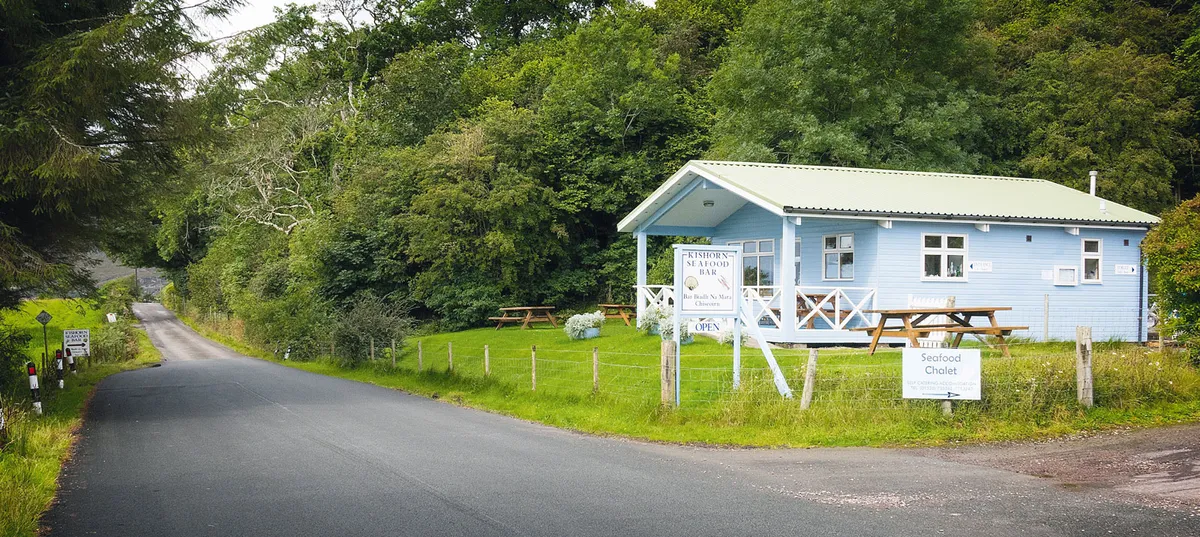
Enjoy fresh Scottish seafood in a magnificent coastal setting at this award-winning seafood shack. kishornseafoodbar.co.uk
Kinloch Smokehouse, Tongue
Find a range of locally sourced fish and game at this smokehouse overlooking Ben Loyal Mountain. kinlochsmokehouse.com
Cocoa Mountain Café, Balnakeil
Fine handmade chocolates and artisan truffles with mouthwatering hot chocolate. cocoamountain.co.uk/balnakeil
Perfect pitstops along the NC500
Local crafts
Connect with the communities along the route of the NC500 by visiting the charming craft and produce markets where local people showcase their talents including horn craft, pottery, home baking and weaving. northcoast500.com
Loch Walks
With so many beautiful lochs along the route, there are many scenic walks. The three-mile Pine Trail through Balblair Wood on the shore of Loch Fleet National Nature Reserve offers hilltop views of the beautiful Kyle of Sutherland and perhaps a meeting with pine marten or sika deer. Allow two hours. scotland.forestry.gov.uk/visit/balblair
Garden Respite
Inspirational gardeners along the NC500 have not been deterred by the rugged Highland terrain, creating sanctuary gardens where, amazingly, many spectacular exotic plants flourish. The colourful gardens at Inverewe, Attadale and the Castle of Mey are all stunning. castleofmey.org.uk
Cycling the NC500
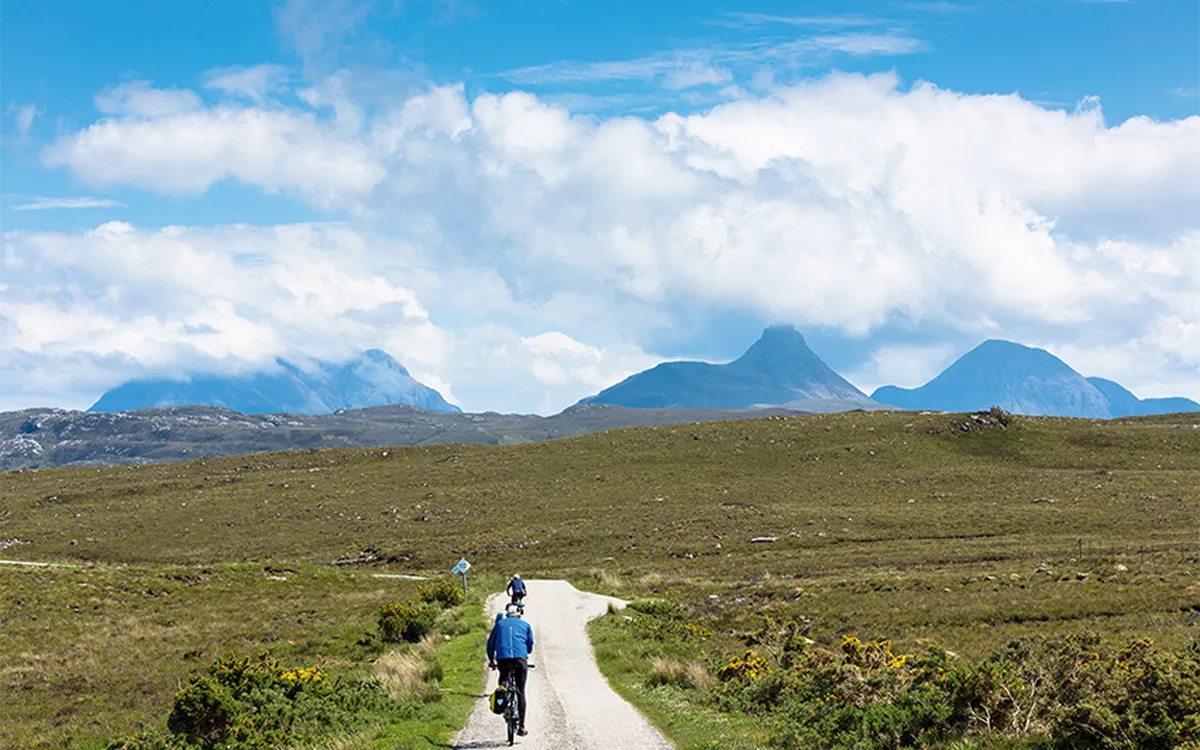
Riding the NC500 is a thrilling challenge and the suggested nine-day itinerary is ambitious even for serious riders. Cyclists are urged to plan carefully around roller-coaster elevations and changeable weather. Emergency supplies and mechanical spares are, naturally, essential.
Wildlife to spot
Extraordinary wildlife awaits along the NC500 route. The summer spectacle of wild Atlantic salmon leaping through powerful cascades at Rogie Falls and the Falls of Shin is awe-inspiring. There are pine martens in woodland (though you’ll be lucky to spot one) and wild goats walk the road in Dundonnell.
Pine marten guide: how to identify and where to see in Britain
Thanks to ongoing reintroduction projects, pine martens are making a comeback in the UK.
A warning of otters in the road marks the crossing of Loch Fleet. At low tide, seals are clearly visible, hauled out on sandbanks. The genteel golfing and cathedral town of Dornoch is a worthwhile detour from the route before it crosses the Dornoch Firth to medieval Tain, another golfing paradise.
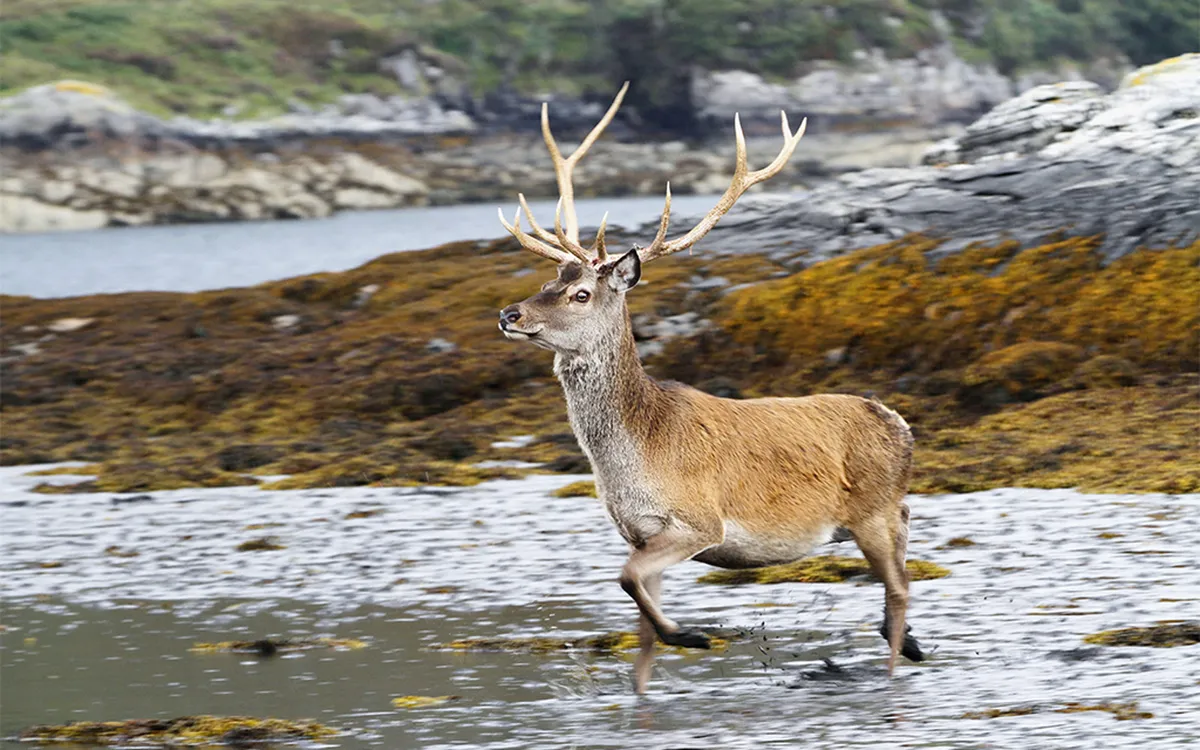
Roaming red deer loom high on mountain ridges and visit the seashore and village gardens, too. A Highland red squirrel reintroduction programme is underway around Kinlochewe and Shieldaig, where white-tailed eagles might be seen. In the lonely mountains, golden eagles glide along ridges in search of prey. Seabirds and marine life includes puffins, skuas, divers, grey and common seals, otters and harbour porpoise. In summer migrant minke whales, orca and dolphins come to visit. Harbours along the route, such as Charlestown, Ullapool, Wick, Dornie and Cromarty offer scenic sea life boat trips with expert local knowledge.
British deer guide: how to identify and best places to see
Just six species of deer live in the British countryside, but it can often be difficult to tell which is which - learn all about these spectacular animals with our deer identification guide, plus discover the best places to see the autumn deer rut.
